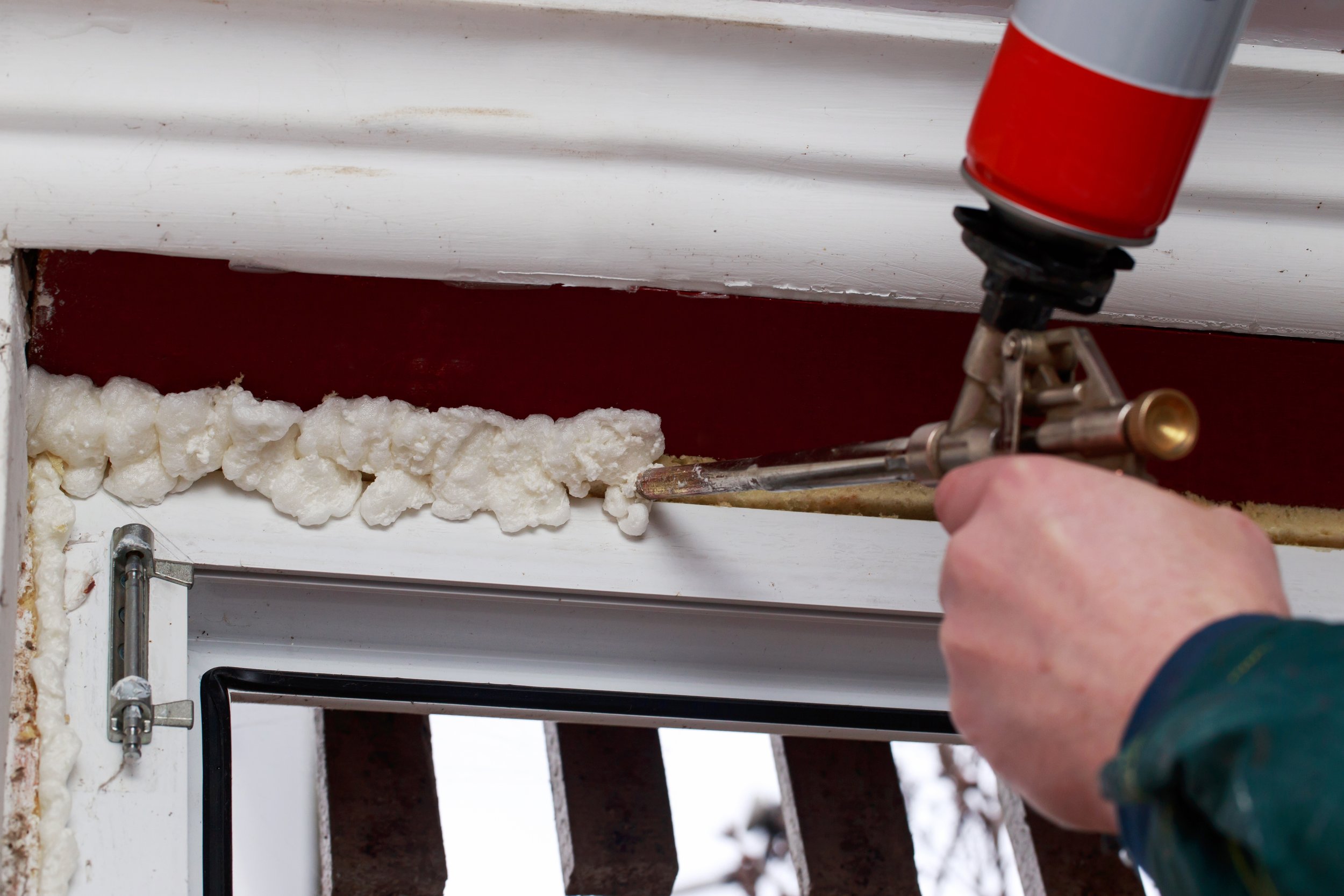
AIR SEALING
Enhance Your Home’s Efficiency and Comfort
WHAT IS AIR SEALING?
Air sealing is a critical process that involves identifying and sealing gaps, cracks, and leaks in your home’s building envelope—the barrier that separates the interior of your home from the outdoors. These leaks, often found around windows, doors, electrical outlets, plumbing penetrations, attics, and basements, allow unconditioned outdoor air to enter your home while letting your heated or cooled indoor air escape.
This unwanted air exchange can significantly impact your home’s energy efficiency, comfort, and overall performance:
Higher Energy Bills: When conditioned air escapes, your heating and cooling systems have to work harder to maintain the desired indoor temperature. This increased workload leads to higher utility costs and unnecessary energy waste.
Uneven Temperatures: Air leaks can create drafts and hot or cold spots, making some rooms uncomfortable compared to others. Proper air sealing ensures consistent temperatures throughout your home.
Reduced Comfort: Drafts caused by air leaks can make your living spaces feel less cozy, particularly during extreme weather conditions.
Poor Indoor Air Quality: Air leaks can allow outdoor pollutants, allergens, and moisture to infiltrate your home, potentially leading to health concerns or mold growth.
BENEFITS OF AIR SEALING
Enhanced Energy Efficiency: Preventing air leaks reduces the workload on your HVAC system, lowering your energy bills.
Improved Comfort: Eliminate drafts and maintain consistent temperatures in every room.
Better Indoor Air Quality: Keep out allergens, dust, and pollutants for a healthier living environment.
Increased Durability: Proper sealing helps prevent moisture intrusion, protecting your home from mold and structural damage.
Eco-Friendly: Reducing energy waste minimizes your carbon footprint, contributing to a more sustainable future.
WHY AIR SEALING MATTERS
Air sealing plays a vital role in improving your home’s overall performance:
Energy Efficiency: By stopping air leaks, you can significantly reduce your home’s energy consumption, saving money and reducing your environmental footprint.
Comfort: Eliminating drafts and maintaining consistent indoor temperatures enhance your home’s livability.
Durability: Proper air sealing prevents moisture intrusion, which can lead to mold growth or damage to your home’s structure.
Sustainability: A well-sealed home uses energy more efficiently, reducing its impact on the environment.
TYPES OF AIR SEALING
Air sealing involves systematically locating and sealing these leakage points using materials such as:
Caulk for small gaps around windows, doors, and plumbing penetrations.
Foam Sealant for larger openings and cracks, such as those found in attics or basements.
Weatherstripping for movable components like doors and windows to create a tight seal.
Insulation combined with air sealing for areas like attics and crawl spaces for maximum efficiency.
OUR AIR SEALING PROCESS
We use advanced tools and techniques to deliver precise, effective results:
Comprehensive Inspection
Our skilled team performs a thorough assessment of your home, locating air leaks in key areas like:
Doors and windows.
Attics and basements.
Ductwork and vents.
Electrical outlets and plumbing penetrations.
Leak Detection
We use state-of-the-art diagnostic tools, such as blower doors and thermal imaging cameras, to identify even the smallest gaps that contribute to energy loss.
Sealing the Gaps
Once leaks are identified, we use high-quality materials like caulk, foam, weatherstripping, and insulation to seal them effectively.
For larger areas, such as attics or crawl spaces, we integrate air sealing with insulation upgrades for maximum efficiency.
Final Testing and Verification
After sealing, we test again to ensure all leaks have been addressed and your home’s air barrier is performing optimally.
Contact us.
Office@sbsenergyimprovement.com
516-406-0461
Inwood, NY
